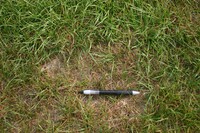By Pam Sherratt
It’s Friday night and it has been raining all day. Your high school football team has just finished winning a big league game and emotions are running high. After all the high fives and congratulatory hand shakes, you turn your attention to the field. What you see is a 100-yard mud hole. You start thinking about what needs to be done to prepare the field for next week’s game. So what do you do? Continue reading Emergency Field Repairs





